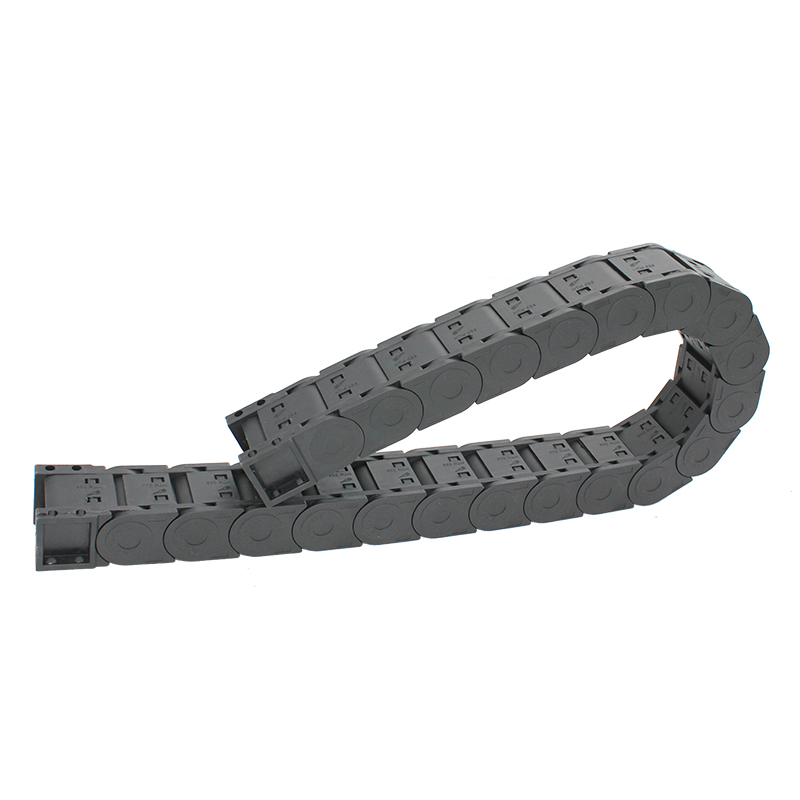Exploring the Benefits of Plastic Flexible Cable Carrier Chains for Enhanced Mobility and Durability
The Importance and Benefits of Plastic Flexible Cable Carrier Chains
In modern manufacturing and automation industries, the need for efficient, safe, and reliable cable management systems has never been more crucial. One innovation that has garnered considerable attention is the plastic flexible cable carrier chain. These specialized systems are designed to protect and guide flexible cables and hoses, ensuring a seamless and efficient operation in various environments.
What is a Plastic Flexible Cable Carrier Chain?
A plastic flexible cable carrier chain, often referred to as a drag chain or energy chain, consists of interconnected links that create a flexible enclosure for cables and hoses. Made primarily from durable plastics, these chains can easily bend and twist without damaging the cables inside. Their design allows for movement in multiple axes, which is especially important in applications involving machines that require dynamic cable management, such as robotic arms, CNC machines, and automated manufacturing lines.
Key Benefits of Plastic Flexible Cable Carrier Chains
1. Durability and Resilience Plastic cable carrier chains are engineered to withstand harsh industrial conditions, including extreme temperatures, chemicals, and abrasion. The use of high-quality plastic materials ensures that these chains are long-lasting and can endure significant wear and tear, thereby reducing the need for frequent replacements and maintenance.
2. Lightweight Construction Compared to their metal counterparts, plastic cable carrier chains are significantly lighter. This feature not only allows for easier handling and installation but also reduces the load on the machinery, leading to increased energy efficiency. In applications where speed and responsiveness are key, the lightweight nature of these chains can contribute to improved overall performance.
plastic flexible cable carrier chain

3. Versatile Applications One of the standout features of plastic flexible cable carrier chains is their versatility. These systems can be used in a diverse range of applications, from industrial automation and robotics to medical equipment and entertainment technology. Their ability to accommodate various sizes and types of cables and hoses makes them suitable for numerous environments and industries.
4. Reduced Friction and Wear The design of plastic carrier chains often includes specialized features such as rounded edges and smooth inner surfaces that minimize friction between the cables and the chain itself. This reduction in friction leads to less wear on the cables, ultimately extending their lifespan and ensuring reliable performance.
5. Cost-effectiveness While the initial investment for a high-quality plastic flexible cable carrier chain might be higher than other conventional cable management solutions, the long-term savings due to reduced maintenance, fewer replacements, and improved operational efficiency make it a cost-effective choice. The reliability of these systems can also lead to less downtime and increased productivity, further enhancing their value.
6. Ease of Installation and Maintenance Plastic cable carrier chains are designed for easy installation. Their modular design allows for quick assembly and disassembly, making it simple to add or replace cables as needed. Furthermore, routine maintenance is straightforward and can often be performed without the need for specialized tools.
Conclusion
As industries continue to evolve and embrace automation, the need for reliable cable management solutions will only grow. Plastic flexible cable carrier chains offer a robust, efficient, and versatile option for businesses looking to enhance their operations. Their numerous benefits, including durability, lightweight construction, and reduced friction, make them an essential component in the modern industrial landscape. By investing in these innovative systems, companies can ensure their machinery operates smoothly and efficiently, resulting in greater productivity and reduced operational costs.








